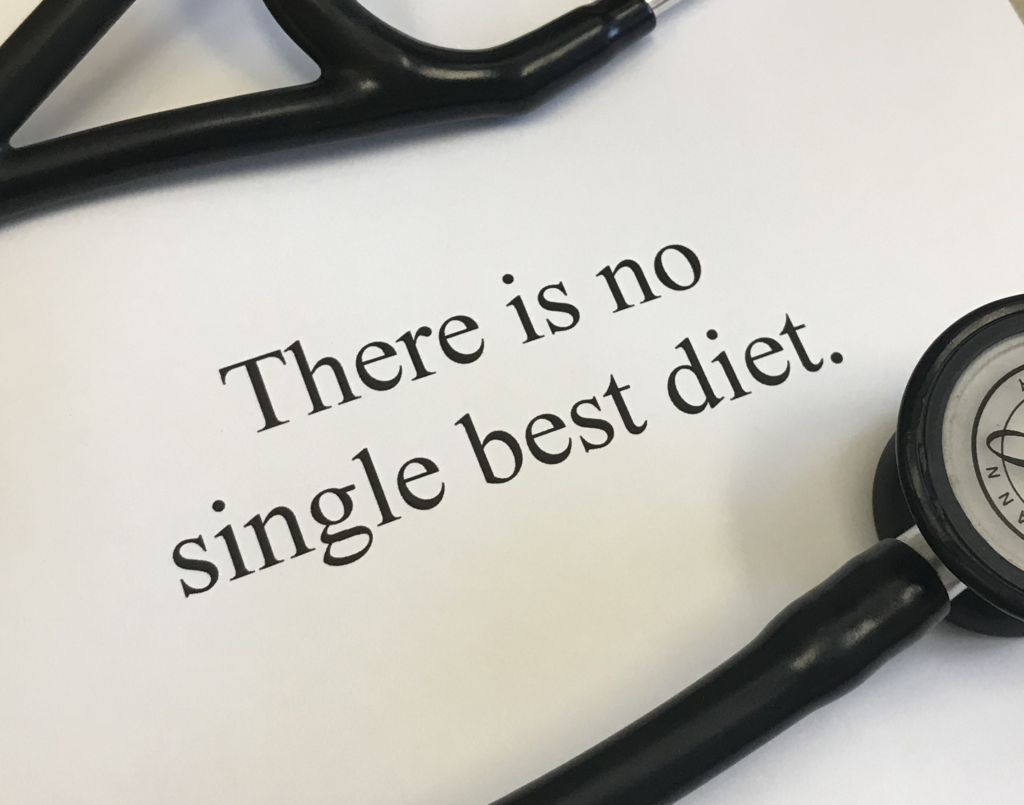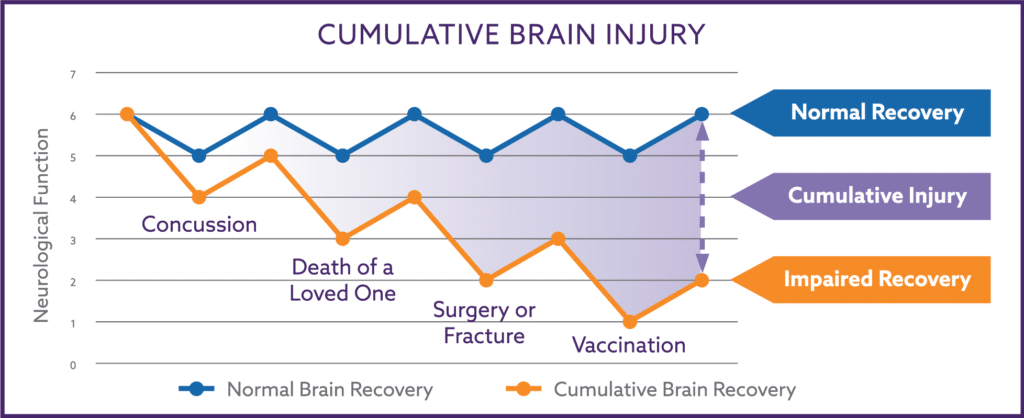It is generally accepted science that over the last several thousand years, humans thrived equally well on diets ranging from pure vegetarian (people with origins in Asia or Far East cultures) to essentially meat-only diets (people with origins in northern cold climates such as the Inuit) with most ancient cultures subsisting on a mixed vegetarian-carnivore diet.
The human body requires essential vitamins, minerals, fats, and proteins, and all of these nutrients can easily be obtained from either a plant-only diet, a meat-only diet, or any combination in between.
In other words, humans were engineered through evolution to survive on whatever food was available. In these modern times, with a wide array of food available to us at all hours, people often ask me to tell them what diet they should follow.
My answer is a long one because there is no single best diet for everyone.
We Are Broken in Different Ways
In the first portion of the last century, the way we prepared and processed our foods changed simply out of the immediate need to feed a growing global population. We needed more food, and we wanted it quickly and cheaply. Foods were prepared in larger quantities and often by using higher temperatures to cook them faster.
Preservatives were invented to prevent spoilage during shipping and storage. We even ‘invented’ food items to replace others less expensively (e.g., margarine replaced butter, soy oil replaced lard or ghee).
As an unintended consequence of these ‘advances’ in food manufacturing, the introduction of some chemicals, processed food production methods, and plastics have inadvertently caused damage to the human body.
In particular, the damage has resulted in the human body being less able to regulate body fat, blood sugar, inflammation, and other factors involved with metabolism.
The areas of the body most vulnerable to these negative effects are the hypothalamus, the autonomic nervous system, our intestinal bacteria, and the immune system surrounding the intestinal tract.
The damage one sustains to their physiology can vary widely depending on an individual’s degree of exposure, environment, genetics, and mother’s exposure to these things during pregnancy. These differences influence how some foods or some eating patterns may positively or negatively affect one person versus how they affect another person.
One example is how some people have to reduce a variety of foods from their diets (nightshades, carbohydrates, or gluten) in order to feel well. In contrast, other individuals can eat these same foods and actually feel better than if those foods were avoided.
The differences between the two reactions to foods by different people are due to the differences in the past damage they have sustained to their metabolic functioning.
Health Goals of “Dieting”
There are various reasons why one would suggest a certain eating pattern over another. As a physician, my recommendations are based on improving specific medical phenomena to help improve a patient’s well-being.
My recommendations are based on a single important overriding goal: lowering the level of systemic inflammation within an individual’s body.
Systemic inflammation is probably one of the single most important health risk factors in that it fuels almost all forms of non-infectious and non-traumatic death. It is referred to as metabolic inflammation and is estimated to be the cause of death for approximately 60% of the global population.
Reducing inflammation improves the quality of life and longevity by reducing one’s blood pressure and the risk of heart disease, strokes, cancer, and diabetes. It also reduces the risk of neurodegenerative disorders such as Alzheimer’s, Parkinson’s, and Macular Degeneration.
My goals are to help my patients adapt as many of the following dietary behaviors into their lifestyle as possible:
- Eat fewer carbohydrates.
- Lower AGE content in their diet (advanced glycation end products).
- Increase omega-3 fatty acids (EPA, DHA) and the omega-3 to omega-6 ratio in their diet.
- The lower omega-6 fatty acid content in the diet.
- Maintain a balanced blend of intestinal bacteria by reversing small intestine bacterial overgrowth (SIBO).
- Engage in regular exercise.
- Avoid breakfast.
- Incorporate a day of fasting (limited calories) each week.
I will break down my instructions from the simplest to the more complicated ones to implement in one’s daily routine.
Protect Yourself from Omega-6 Fatty Acids
-
- A major source of inflammation is the intake of polyunsaturated fats from high omega-6 fatty acid cooking oils, cheap fillers in processed foods, eating livestock that was fed grains, or fish that is farm-raised. Grass-fed cattle are preferred over grain-fed cattle, and wild fish are preferred over farmed fish.
- Extra virgin olive oil contains omega-9 fatty acids, which have the ability to protect your body from excessive amounts of omega-6 fatty acids.
- Goal #1: Consume approximately two tablespoons (30 ml) of extra virgin olive oil daily. Because of their high testing standards, I recommend using only COOC-certified olive oil (California Olive Oil Council).
- Goal #2: Replace your routine cooking oil with either extra virgin olive oil or canola oil.
- Goal #3: Reduce high omega-6 concentration grain oils (soy oil, corn oil, ‘vegetable’ oil, sunflower oil, safflower oil) in cooking or in prepared foods whenever possible.
Increase Omega-3 Intake
-
- Increase your omega-3 intake by supplementing with high-quality fish oil.
- Fish oil has two components, EPA and DHA.
- Goal: Supplement with approximately 3,000 mg of omega-3 fatty acids from fish oil daily (EPA + DHA). My patients with autonomic dysfunction supplement with 4,500 mg of EPA + DHA with approximately 3,000 mg of the omega-3 fatty acids from the DHA portion.
- Grass-fed livestock and wild game are other good sources of omega-3 fatty acids.
Increase Exercise
-
- A simple target of doing any form of exercise 3 times per week has the equivalent health benefit of eliminating a 1-pack-per-day cigarette habit.
- Goal: Exercise, in any form, three times per week.
Lowering the intake of AGEs by Changing How You Cook Your Food
-
- AGEs (advanced glycation end products) are highly inflammatory and are formed when we heat food. High temperatures and dryer cooking conditions lead to a more significant formation of AGEs.
- AGEs are major contributors to degenerative arthritis, atrial fibrillation, chronic kidney disease, and other conditions.
- Goal: Eat more raw foods and shift your cooking methods to “low and slow” ones with lower temperatures and longer cooking times, like steaming, crockpots, and sous vide style (water bath) cooking. I no longer use deep-frying, outdoor grills, or pressure cookers at home.
Improve Weight Control
-
- Maintaining a healthy body weight not only lowers systemic inflammation but is associated with reduced risk of blood pressure, heart disease, cancer, and arthritic complaints.
- Goal #1: Skip breakfast (referred to as time-restricted feeding, which is mistakenly referred to as intermittent fasting).
- Goal #2: Do not bring excessive amounts of pleasurable foods into the home (i.e., if ice cream is your irresistible food, occasionally eat a single scoop at the store instead of bringing home a large container of ice cream).
Reversal of Insulin Resistance with Carbohydrate Reduction
-
- Insulin resistance is a pattern of abnormal cellular functioning where your body does not properly respond to the insulin that you make, and your blood sugar levels rise, leading not only to diabetes mellitus type 2 but also fueling cancer growth, infertility (PCOS), fatty liver disease, and cardiomyopathy.
- Goal: Reduce total carbohydrate intake to less than 100 grams per day.
Trigger Hormesis with Intermittent Fasting
-
- Hormesis is a healthy level of cellular stress that can go a long way toward activating your natural cellular repair mechanisms.
- The easiest way to trigger a meaningful level of hormesis is by Intermittent Fasting once a week. The drastic drop in calories for 24 hours encourages cells to shift into a repair mode.
- Intermittent Fasting has a very powerful effect in reversing cellular damage, reducing systemic AGE levels, and burning off abnormal body fat deposits.
- Goal: Reduce caloric intake to 500 calories for 24 hours once a week.
Balance Intestinal Bacteria
-
- Reversal of small intestine bacterial overgrowth (SIBO) often results in major improvements in food intolerance. It will eliminate most of the inflammatory effects from common foods in your diet (excluding omega-6 fatty acids).
- Goal: Take a 10-day course of a prescription medication called rifaximin (Xifaxan™).
Benefits of a Few Different Eating “Styles”
I have broken down a few types of different eating patterns or styles and how they can help make an individual feel better. This list is not complete but just examples of how I look at different approaches.
Benefits of a Low Carbohydrate Diet (Less than 100 grams per day):
-
- Improves blood sugar regulation.
- Lowers systemic inflammation, which reduces blood pressure and risk of heart disease and stroke, cancer, and neurodegenerative disorders (Alzheimer’s, Parkinson’s, Lewy Body, Macular Degeneration).
- Often results in eating less processed foods with a subsequent reduction in omega-6 fatty acids contained in these foods.
- It can reduce the negative effects of small intestine bacterial overgrowth (SIBO) since most intestinal bacteria tend to thrive on carbohydrates.
Benefits of a Vegetarian Diet:
-
- Environmentally, climate-change friendly.
- Lowers inflammation because of a reduction in AGEs since foods are more often eaten raw (think salads) or steamed.
- Improves blood sugar regulation, especially if it results in weight loss.
- Results in eating less processed foods and grain-fed livestock resulted in the reduction of inflammation from the reduced exposure to the omega-6 fatty acids contained in these foods.
Benefits of a Mediterranean Diet:
-
- Defined by high consumption of olive oil, fish, legumes, vegetables, fruit, and unrefined cereals, and moderate consumption of wine and dairy products.
- Proven to promote health both historically and scientifically.
- Lowers inflammation and the subsequent risk of heart disease, cancer, diabetes mellitus type 2, and Alzheimer’s dementia.
- Often results in eating less processed foods with a subsequent reduction in omega-6 fatty acids contained in these foods.
Summary
I hope you find this overview helpful in understanding how I approach dietary recommendations as a physician with a significant background in clinical nutrition.
As you can see, I do not make a single recommendation that you should eat or you should not eat this or that particular food. This is because there is no evidence that certain foods are innately more or less healthy for us to eat.
Unfortunately, most of us have been metabolically damaged in our own unique way, and each of us needs to craft our own unique way of eating. We need to learn to eat foods that do not cause any uncomfortable symptoms and can lower the risk of illness by lowering systemic inflammation.
I am an internal medicine physician (D.O.) from UCLA, and my Internal Medicine and Autonomic practice is in the Phoenix, Arizona, area. For additional information, go to AutonomicMed.com.
This post is provided as an information resource and is not to be used or relied on for diagnostic or treatment purposes. This information is not intended to be patient education and does not create any patient-physician relationship.


